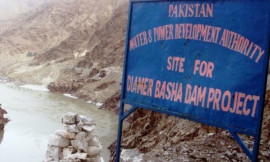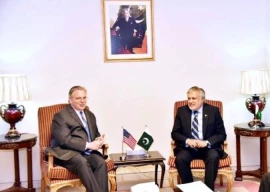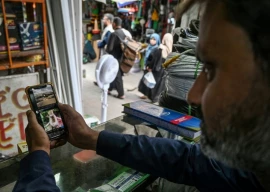
As Chinese philosophy decisively asserts, “you cannot live in a castle made of glass while your neighbour lives in the stone ages”. This maxim offers a stark contrast to the case of the United States, a highly developed state that faces tremendous migration problems from its neighbours Mexico and Puerto Rico due to the existence of a glaring development gap in the region. Instead of increasing aid to these destitute countries, the current US administration is considering the construction of a “wall” to keep migrants out. There has not been a conclusive agreement upon which side of the border will bear the financial burden of this project. On the contrary, in accordance with the Chinese wisdom aforementioned, the Chinese mega project, One Belt, One Road (OBOR) initiative, worth approximately $900 billion, is a regional plan which will enrich the entire Euro-Asiatic region, including China.
OBOR is a regional connectivity strategy that comprises 65 countries and six economic corridors and caters to two-thirds of the world’s population. It aims to improve infrastructure in these countries and enhance the movement of goods and people, promoting trade and exchange, generating more economic activities and employment opportunities for the whole region. This will definitely better the standard of living for people in this region of the world. The China-Pakistan Economic Corridor (CPEC) is one of the six economic corridors proposed under the OBOR initiative. It is the shortest, most convenient and most feasible corridor, among them all. It is also the flagship project, as both governments attribute high value to its success, and are striving to make it the prototype for the rest of the world.
CPEC is not a completely novel idea. It was introduced by the first Chinese ambassador to Pakistan, General Geng Biao, in the 1960s. Geng was a visionary diplomat, general, and politician. He proposed the road linkage between China and Pakistan through Khunjerab. That is how the Karakoram Highway came to fruition. This highway was a blessing for the people of Gilgit-Baltistan (G-B) because prior to its construction, locals used to travel by foot or horseback to reach Punjab and the journey often took a couple of months. With the commencement of this road, the travel was reduced to less than 24 hours. The topography of G-B encompasses a very tough terrain, high altitudes (Khunjerab Pass lies at approximately 4000m above the sea level), solid hard rocks, mountains, and extreme climate (some of the areas have minus 50 degree Celsius). Thus, the construction of the Karakoram Highway was a miracle and it is considered the eighth wonder of the world. Due to budgetary constraints and the lack of modern technology, however, the quality of the road was rather poor, with many sharp curves and steep slopes. The average speed of a vehicle could not be more than 40 kilometres per hour. But recently, the highway has been upgraded and a decent speed of 120 kilometres per hour can be maintained. Nevertheless, some sections of the Karakoram Highway are still under construction and hopefully, within the next couple of years, it will turn into a proper motorway.
Under CPEC, a huge network of highways and motorways are in progress. The ML1 railway track from Karachi to Peshawar is being upgraded. Some tunnels and bridges are under construction to maintain the high speed of trains and shorten distances. A huge dry port linked by railway and motorway is under construction at Havelian, which will be a logistic hub for CPEC in the future.
Oil and gas pipelines are now in an advanced stage of completion throughout the country. One of them is an oil and gas pipeline from Gwadar to Nawabshah constructed by a Chinese company, and another from Karachi to Lahore is under the initial stages of construction by a Russian company. In the future, transportation of energy (oil, gas, LNG, etc) will be conveniently transported by pipelines, instead of with costly trucks that cause pollution. In the next few years, these pipelines will also be transporting oil and gas from Gwadar to inside China through Khunjerab, at a fraction of the cost of the sea containers going through Malacca Strait. Even if China imports only ten per cent of its requirements through CPEC pipelines, Pakistan will be earning billions of dollars in revenue, and this makes it a win-win situation for both countries.
Among the 51 projects signed during the visit of Chinese President Xi Jin Ping, priority was given to power projects that amounted to a total worth of 33 billion. Some of these power projects have been completed and have begun adding power to the National Grid. However, several of the mega projects will take some time to complete. Upon completion of these projects, it is expected that Pakistan will have sufficient power, and there will be no more shortage of power. The next stage of CPEC is under planning, also referred to as the “industrialisation” phase. The Chinese industrial sector is saturated and increasing labour cost is forcing Chinese industries to shift out of China. Pakistan is the best destination for the Chinese industry. Pakistan is planning industrial parks, special economic zones and science parks to facilitate the flourishing of the Chinese industry in Pakistan. After overcoming the power shortage, the shifting of Chinese industries into Pakistan will be accelerated.
CPEC will directly or indirectly generate around two million jobs. In the beginning, Chinese workforce will be hired in Pakistan, but gradually within a few years once Pakistan trains its workforce to the Chinese standard, Pakistanis will replace the workforce. Chinese industry will increase our productivity, reduce our imports, and enhance our exports. The economy will grow on an unprecedented scale. It will also improve the security situation in Pakistan as well as in the whole region. The aforementioned is possible if we unite and work hard. We need visionary and sincere leadership to execute this. The common man in Pakistan is honest, simple, hardworking and willing to devote himself to the cause of a prosperous nation.
Published in The Express Tribune, June 16th, 2017.
Like Opinion & Editorial on Facebook, follow @ETOpEd on Twitter to receive all updates on all our daily pieces.






















































COMMENTS (2)
Comments are moderated and generally will be posted if they are on-topic and not abusive.
For more information, please see our Comments FAQ